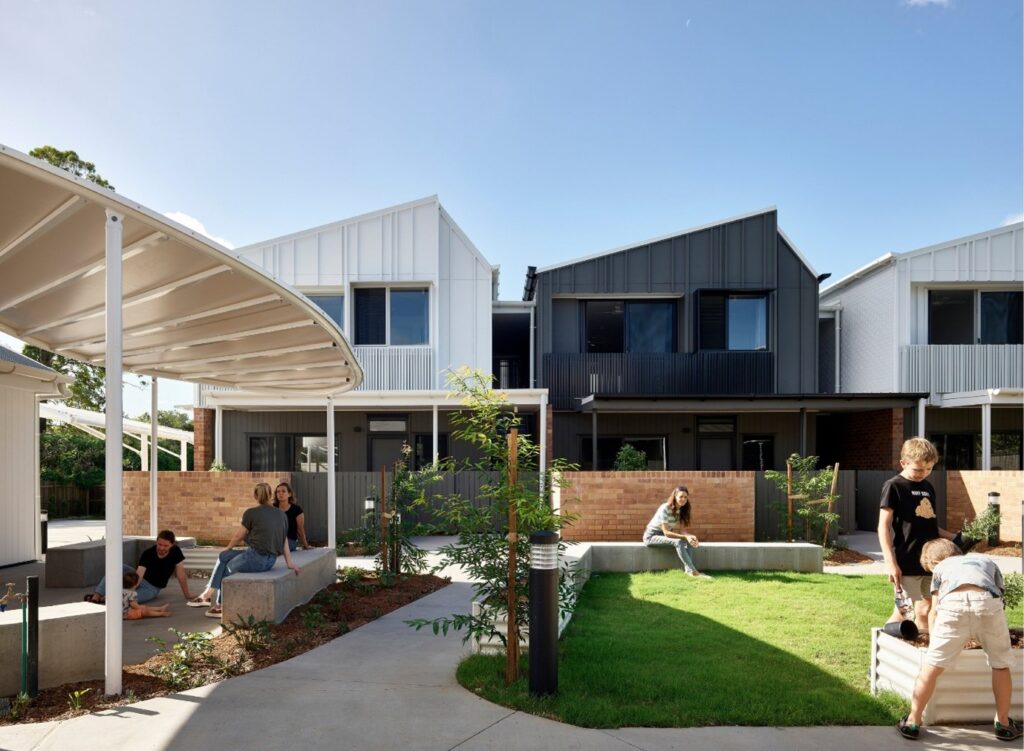Installing Commercial shade structures is one of the most effective ways businesses in South East Queensland can enhance customer comfort, protect assets, and extend usable outdoor space. From covered outdoor dining to massive car park canopies, these structures are vital investments. However, before ground is broken, businesses must navigate the critical question of council permits and building approvals.
In Brisbane, the planning and building regulations are governed by the Brisbane City Council. Failing to secure the necessary approvals for a new shade structure can lead to severe consequences, including costly fines, demolition orders, and significant insurance issues down the line. Understanding the permit process is not just a bureaucratic hurdle; it is a fundamental part of risk management for any commercial project.
This comprehensive guide breaks down the rules for commercial shade structures in the Brisbane region, helping you understand when a Building Permit is mandatory, what triggers a review, and how choosing the right partner ensures smooth compliance. We have manufactured and installed 100 shade structures for Brisbane City Council over the last couple of years.
The Baseline: When Is a Building Permit Required in Brisbane?
In Queensland, commercial shade structures are generally classified under Class 10b (non-habitable structures). While some minor works are exempt, most commercial-scale installations in Brisbane will require a Building Approval (certified by a Private Certifier) if they meet certain thresholds.
The primary triggers for requiring a permit revolve around size, height, location, and structural integrity:
1. Structural Integrity and Wind Loading
Commercial structures must be designed to withstand severe weather events common in Queensland, including high winds and storms. If a structure is fixed to the ground or a building and has a wind load rating, it almost certainly requires certification. This ensures the design specifications meet the stringent requirements of the National Construction Code (NCC) and Australian Standards (AS4055 for wind loads).
2. Height and Size
Any structure exceeding a certain height or covering a large footprint usually requires approval. For shade sails or canopies intended for pedestrian areas, if the structure is over a certain height (often 2.4 meters in clearance) or covers an area greater than 10 square meters, certification is likely mandatory. The sheer scale of most commercial projects means they almost always surpass these minimums.
3. Boundary Setbacks
If the structure is close to a boundary, especially an adjoining commercial or residential property, council approval is essential to ensure compliance with setback regulations and fire safety codes.
Permits by Structure Type
The type of structure you plan to build directly influences the complexity of the approval process.
Car Park Shade Structures
Car park structures are a major investment, and almost without exception, they require full Building Approval. The size is the immediate factor, but additional considerations include:
- Vehicle Access and Movement: The design must not impede traffic flow or vehicle manoeuvrability.
- Clearance Height: Structures over parking bays must meet minimum clearance heights to accommodate various vehicles, which often exceeds the standard 8 feet for pedestrian areas.
- Traffic Signage and Safety: Integration of safety elements and ensuring the structure does not obstruct visibility are critical.
When planning In Brisbane, shade sails over a large car park, engaging with a Private Certifier early is essential to guarantee the structural design and engineering specifications comply with all local codes.
Waterproof Canopies and Roofing
Structures using waterproof properties (such as PVC-coated polyester or insulated panel roofing) introduce a layer of complexity: stormwater management.
If the structure captures water, the Building Approval process must address:
- Plumbing Approval: How rainwater is collected and discharged. It must be directed into an approved drainage system and not onto adjoining properties.
- Structural Load: Waterproof material can hold significant weight from rainwater, requiring far more robust structural supports than standard shade mesh.
This dual requirement for both structural and potential plumbing certification makes professional guidance non-negotiable.
Smaller Awnings and Non-Permanent Sails
For very small, non-load-bearing shade sails, there might be an exemption, but these are rare in a commercial context where sizes are typically larger. If you are only installing an awning that projects a minor distance from a building, an exemption might apply, provided it doesn’t affect fire egress or structural integrity. Always check with a certifier. The best practice is to always assume a permit is needed for any fixed Commercial shade structure used by the public or protecting business assets.
The Brisbane Building Approval Process: A Simple Overview
The Brisbane City Council allows commercial clients to use Private Certifiers (Building Surveyors) to manage the entire application process, which is often faster and more efficient than dealing directly with the Council for operational works.
The process typically follows these steps:
- Design and Engineering: Your shade structure supplier designs the structure and produces certified engineering drawings, ensuring the design accounts for local wind regions and features adequate UV protection.
- Private Certifier Engagement: You engage a Private Certifier. They review the architectural and engineering plans against the NCC and local Brisbane planning codes.
- Council Search and Planning: The Certifier conducts necessary searches (e.g., dial-before-you-dig, property maps) and determines if a Planning Approval (in addition to a Building Approval) is needed due to proximity to boundaries, heritage overlays, or specific zoning laws.
- Permit Issuance: Once the Certifier is satisfied, they issue the Building Approval.
- Construction and Inspection: Construction proceeds. The Certifier performs mandatory inspections at key stages (e.g., footing, final structure).
- Final Certification: Upon successful completion, the Certifier issues the final Certificate of Occupancy (or Final Inspection Certificate for Class 10b structures), legally confirming the structure’s compliance.
The Financial and Legal Risks of Non-Compliance
While avoiding the permit process might seem like a way to save time or money, the long-term risks far outweigh any short-term savings.
- Council Enforcement: The Brisbane City Council is highly active in auditing commercial constructions. Non-compliant structures can result in infringement notices, severe fines, and the eventual order to demolish or alter the structure at immense cost.
- Insurance Voids: A non-compliant structure may not be covered by your commercial property insurance. If the structure is damaged in a storm or causes damage to a neighbouring property, your claim could be denied because the structure was never legally approved.
- Resale Value: When selling the property, buyers will request records of all building approvals. A lack of proper certification can complicate or even derail the sale.
Ensuring Compliance by Choosing the Right Partner
The surest way to navigate Brisbane’s complex permit landscape is to partner with a supplier that handles the certification process for you. An Award-winning company not only offers superior materials and craftsmanship but also has established relationships with engineers and Private Certifiers, ensuring all necessary documentation is handled seamlessly.
By engaging a full-service provider, the commercial client outsources the entire regulatory headache—from engineering drawings to final sign-off—guaranteeing that your valuable investment is structurally sound, legally compliant, and will last for the guaranteed 10 to 20 years.
Conclusion
The question of whether a commercial shade structure requires a permit in Brisbane is rarely “no.” Due to the factors of scale, wind loading, and proximity to assets, almost all commercial installations demand professional certification. Taking the time to secure the necessary Building Approval is a fundamental step in protecting your business, your customers, and your investment in the future of your outdoor space.
Don’t risk non-compliance. Engage with experts early in your planning process to ensure your new shade structure adheres to every local regulation, allowing you to enjoy the benefits of your new installation worry-free.

